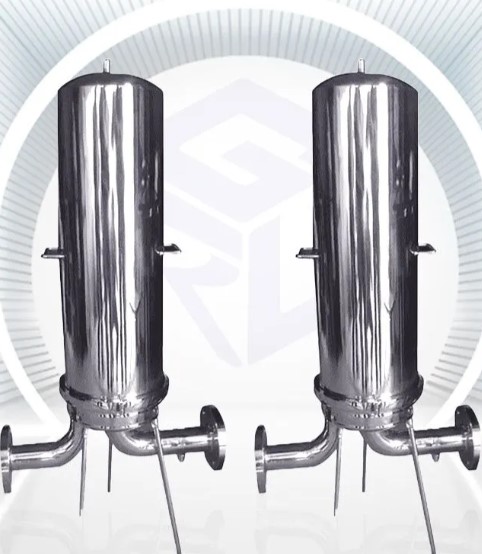
Filter housing plays a crucial role in numerous industries and applications, providing a protective enclosure for filtration systems. Whether it’s in water treatment plants, manufacturing facilities, or residential settings, filter housings are essential components that ensure efficient filtration processes. In this comprehensive guide, we delve into the types, functions, and applications of filter housing, shedding light on its significance in various sectors.
What is Filter Housing?
Filter housing, also known as filter casing or filter vessel, refers to the container or enclosure that holds a filter cartridge or other filtration media. It provides structural support, protection, and containment for the filter element while facilitating the filtration process. Filter housings are available in diverse designs, sizes, and materials to suit specific filtration requirements across different industries.
Types of Filter Housing:
Cartridge Filter Housings: Cartridge filter housings are among the most common types, designed to accommodate cartridge filters. These housings typically feature a cylindrical chamber where the cartridge filter is inserted and secured. Cartridge filter housings are widely used in residential, commercial, and industrial applications for water purification, oil filtration, and air filtration.
Bag Filter Housings: Bag filter housings are characterized by their ability to hold filter bags, which are larger filtration media compared to cartridge filters. These housings feature a larger chamber where the filter bag is placed and secured, allowing for higher flow rates and greater dirt-holding capacity. Bag filter housings are commonly employed in industrial processes such as chemical processing, food and beverage production, and wastewater treatment.
Inline Filter Housings: Inline filter housings are installed directly into pipelines to accommodate inline filters. They are designed to integrate seamlessly into existing piping systems, providing filtration without requiring additional space. Inline filter housings are utilized in various applications, including water purification, HVAC systems, and automotive fluid filtration.
Multi-Cartridge Filter Housings: Multi-cartridge filter housings are designed to hold multiple cartridge filters simultaneously, enabling higher flow rates and increased filtration capacity. These housings are favored in applications where large volumes of fluid need to be processed efficiently, such as industrial manufacturing, pharmaceutical production, and municipal water treatment.
Sanitary Filter Housings: Sanitary filter housings are specifically designed for applications requiring strict hygiene standards, such as food and beverage processing, pharmaceutical manufacturing, and biotechnology. These housings are constructed from materials that meet sanitary requirements and feature smooth, crevice-free surfaces to prevent bacterial growth and contamination.
Functions of Filter Housing:
Housing the Filter Element: One of the primary functions of filter housing is to protect the filter element from damage, contamination, and external factors. The housing acts as a barrier, shielding the filter from physical impact, chemical exposure, and environmental contaminants, thereby prolonging its lifespan and ensuring reliable filtration performance.
Containment: Filter housing provides a containment vessel for the filter element, securely holding it in place within the filtration system. This containment prevents the filter from shifting or dislodging during operation, maintaining proper alignment and optimal filtration efficiency.
Pressure Management: Filter housing helps manage fluid pressure within the filtration system, ensuring smooth flow dynamics and preventing pressure spikes or fluctuations that could compromise filtration performance. The design and construction of the housing influence pressure drop, flow rates, and overall system integrity.
Versatility: Filter housing offers versatility in terms of compatibility with different types of filter media, including cartridge filters, bag filters, membrane filters, and others. This versatility allows for customization and adaptation to specific filtration requirements, accommodating diverse applications across various industries.
Applications of Filter Housing:
Water Treatment: The filter housing is extensively used in water treatment applications, including municipal water treatment plants, industrial water filtration systems, and residential water purifiers. It helps remove impurities, sediment, contaminants, and microorganisms from water sources, ensuring clean and safe drinking water.
Industrial Filtration: In industrial settings, filter housing is employed for a wide range of filtration processes, such as oil filtration, chemical processing, gas purification, and particle removal. Industries such as automotive, aerospace, manufacturing, and electronics rely on filter housing to maintain product quality, equipment reliability, and regulatory compliance.
Food and Beverage Processing: Filter housing is crucial in food and beverage processing facilities for maintaining hygiene, ensuring product quality, and meeting regulatory standards. It is used for filtering ingredients, clarifying liquids, removing particulates, and sterilizing beverages, dairy products, sauces, and syrups.
Pharmaceutical Manufacturing: In pharmaceutical manufacturing, filter housing is utilized for critical applications such as sterile filtration, bioburden reduction, and purification of pharmaceutical products and ingredients. Sanitary filter housings with validated designs and materials are essential for meeting stringent regulatory requirements and ensuring product safety.
HVAC Systems: Filter housing is integral to HVAC (Heating, Ventilation, and Air Conditioning) systems, where it helps remove airborne contaminants, dust, pollen, and allergens from indoor air. It improves indoor air quality, protects HVAC equipment from fouling, and enhances system performance and energy efficiency.
Conclusion:
Filter housing plays a vital role in diverse industries and applications, serving as a protective enclosure for filtration systems and ensuring efficient and reliable filtration processes. With its various types, functions, and applications, filter housing contributes to clean water supply, product quality assurance, equipment protection, and environmental sustainability across different sectors. Understanding the significance of filter housing is essential for optimizing filtration performance and achieving desired outcomes in various industrial and commercial settings.
Frequently Asked Questions
How often should I replace the filter element?
The replacement frequency depends on the filter element type, application, and level of contamination. It’s crucial to follow the manufacturer’s recommendations and consult a professional if unsure.
How do I maintain a filter housing?
Regular maintenance includes:
- Replacing the filter element at the recommended intervals.
- Inspecting the housing for leaks or damage.
- Cleaning the housing as per the manufacturer’s instructions.
What are the different types of filter housings?
There are various types of filter housings, categorized by factors like:
- Material: Stainless steel, polypropylene, and PVC are common materials.
- Pressure rating: Different housings are designed for specific pressure ranges.
- Size and configuration: Housings come in various sizes and configurations to suit different flow rates and filtration needs.




